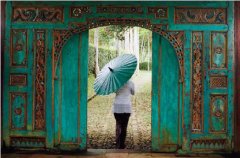Coffee Culture French and Coffee Culture
When the French conducted a survey of foreign tourists and were asked what was the most attractive thing about Paris, many people answered not places of interest such as the Louvre and the Eiffel Tower, but cafes scattered on the streets of Paris. Someone once compared cafes to the skeletons of France, saying that if they were torn down, France would fall apart. Xu Zhimo also said, "if there are no cafes in Paris, I am afraid it will become nothing cute."
I have heard that France once drank less coffee because of a shortage of coffee, and immediately saw more people taking a nap. It may be an exaggeration, but it is true that the French are addicted to coffee.
When the "Gulf War" broke out in 1991, France was also one of the countries participating in the war. some ordinary people in China worried that the war would affect the supply of daily necessities and rushed to supermarkets to buy them. The incident alarmed the TV station, and when the camera looked at the customers who were holding "scarce supplies", they found that what they got the most was coffee and sugar.
French people go to cafes not only for coffee, but also to relax. Ordinary people like to take part in the fun, party or dinner, and they like to go wherever there are more people. Whether you are a learned philosopher, a frustrated scholar, a down-and-out artist, or a student after school, you can relax as long as you ask for a cup of hot coffee or other drink.
The warm and unrestrained blood of the Latin nation flows through the veins of the French, and they are keen to talk and publicize themselves. In the medieval feudal dynasty, the French court was the center of French political and cultural life, and the salon of upper-class society always led the mass culture and life style of France. The relaxed, elegant, romantic and colorful way of life of the royal aristocracy has affected the interest of the public. Cafes inherit some of the communicative functions of aristocratic salons in the social life of the common people, especially intellectuals.
The clove cafe on Montparnasse Street is frequented by American writers Miller and Hemingway, Irish writer Joyce and Spanish painter Picasso. Today, Hemingway's usual chair is still there, and his name is engraved on the bronze medal on the back of the chair. The clove cafe has a specialty called Hemingway Pepper Steak. When many American tourists visit Paris, they have to go there.
The Flower God Cafe opposite St. Germain's Church and the dual Cafe next door are the places where existentialist masters Sartre and Beaufort discuss and write every day. It was sitting at the window facing the street at the Flower God Cafe that Beaufort wrote those warm love letters to her American lover Algren.
Prokopu Cafe is the first coffee shop to open in Paris. 300 years after the passage of time, it still retains its simple and elegant traditional decoration. Voltaire and Rousseau, the thinkers of the European Enlightenment in the 18th century, and Diderot, the author of the world's first encyclopedia, wrote works here that influenced the process of revolution and social development in Europe and America. Robespierre, Danton and Mara, the three giants of the French Revolution, also talked with other revolutionaries about the ideal of changing society and drew their own blueprints. These brilliant names often enable us to trace the passing years more or less in the staggered time and space.
Important Notice :
前街咖啡 FrontStreet Coffee has moved to new addredd:
FrontStreet Coffee Address: 315,Donghua East Road,GuangZhou
Tel:020 38364473
- Prev

High-quality coffee culture taste coffee culture in Southeast Asia
I don't know how you are in other parts of Southeast Asia, but I am always at a loss on the streets of Singapore, on the corner of Vietnam and on a sign in Malaysia. Although transliteration of things like coffee was widely used by clever ancestors in the early years of its spread, there is not much audio-visual barrier, even though Singaporeans always refer to coffee as Kopi, which is pronounced from Hokkienese.
- Next

Fine Coffee Culture Coffee Culture in France
The French do not seem to pay attention to the taste, but the environment and atmosphere. Most of them do not want to drink alone behind closed doors, but want to join the fun outside. Even a small cup of coffee is enough to brew a pot at home. The French drink coffee slowly, taste it carefully, read books and newspapers, talk about it, and soak it for most of the day. France is a resting place because of this traditional and unique coffee culture.
Related
- How did the Salvadoran coffee industry develop in Central America?
- What exactly does the golden cup extraction of coffee mean?
- The Origin of Coffee flower
- [2023 Starbucks World Earth Day] there are more meaningful things besides free Starbucks coffee!
- What kind of coffee is there in Spain? 9 Flavors of Spanish Coffee
- Aromatic African coffee| Kenya's coffee culture and historical production area
- Liberica Coffee Bean knowledge: the characteristics of Liberian Coffee beans of the three original species of Coffee beans
- The origin and formula of Spanish latte introduces the taste characteristics of Bombon coffee in Valencia, Spain.
- How to adjust the solution of over-extracted coffee
- What is the tasting period of coffee beans? What is the period of coffee and beans? How should coffee wake up and raise beans?

